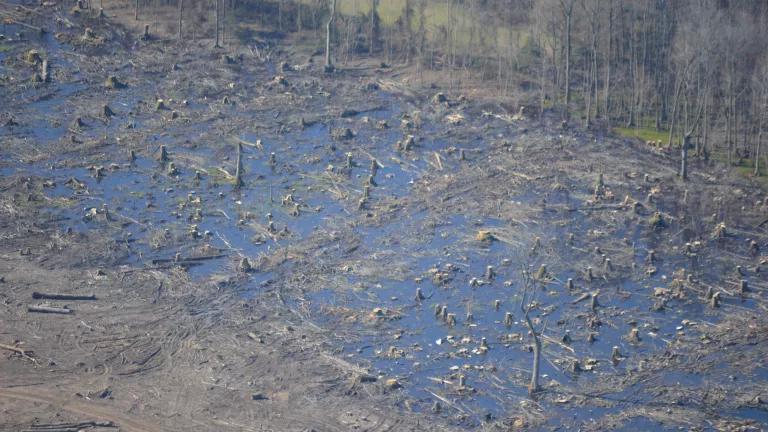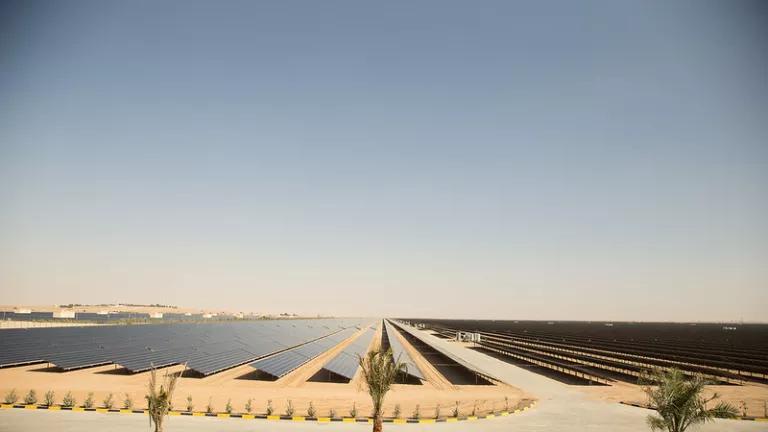More Land Use for Bioenergy Risks People and Planet
A new report from the Intergovernmental Panel on Climate Change (IPCC) on climate change and land use sounds the alarm about the risks of turning large swaths of land around the world to grow crops for various forms of so-called “bioenergy” production instead of producing food, supporting wildlife, and protecting clean water resources.

As a global community, we now know exactly what happens when countries adopt misguided incentives to use forests and other lands for fuel—whether for palm oil from Indonesia or wood pellets for electricity production from the forests of the U.S. Southeast: more climate pollution, more ecological devastation, and fewer protections against hunger and climate chaos for the most vulnerable communities. A new report from the Intergovernmental Panel on Climate Change (IPCC) on climate change and land use sounds the alarm about the risks of turning large swaths of land around the world to grow crops for various forms of so-called “bioenergy” production instead of producing food, supporting wildlife, and protecting clean water resources.
Unfortunately, bioenergy continues to be touted by some as an environmentally preferable alternative to fossil fuels. In fact, burning biomass from forests in particular is fundamentally incompatible with the aim of phasing out carbon emissions and averting the worst consequences of climate change. We either protect and expand forests, allowing them to grow old to maximize their carbon storage, or we harvest and burn them for fuel. We cannot do both.
The world’s forests already suck roughly one-quarter of our CO2 pollution out of the air and store more carbon than all of the readily exploitable fossil fuel reserves combined. Together, landscapes around the world hold about three times as much carbon as the atmosphere. Disturbing these “terrestrial” carbon pools and releasing even a small percentage of this stored carbon—for example by converting natural forests into tree plantations to be used as fuel—is just like building giant smokestacks from the perspective of the atmosphere. It makes avoiding climate devastation much, much harder.
As the report warns, “Increasing the extent and intensity of biomass production, for example through fertilizer additions, irrigation or monoculture energy plantations can result in local land degradation,” and could lead to land degradation elsewhere through “indirect land-use change,” referring to the dangerous ripple effects of displacing food and fibre production by incentivizing farmers to grow energy crops instead. The authors also warn that, “pathways that include large increases in area for bioenergy crops may result in increased competition for land and can have adverse side-effects for water scarcity, biodiversity, land degradation, desertification, and food insecurity.”
Unfortunately, while this latest report recognizes the downsides of burning wood for fuel, it also at times parrots the biomass and timber industry’s magical thinking that “sustainable forest management” can overcome this reality. But as I discussed here, practices the industry terms “sustainable” treat forests only as commodities—to be kept young, harvested as often as possible for forest products markets and converted to monoculture plantations that bear little resemblance to ecologically and carbon rich natural forests.
Today, we can see this in the exploding wood pellet industry in the U.S. Southeast, where pellet manufacturers routinely source trees from clearcuts of mature hardwood forests, all under the guise of fighting climate change and promoting renewable energy. These patently destructive practices all take place under national and corporate sustainability programs that amount to little more than greenwashing.

When it comes to climate change, the timeframe matters, too. As the IPCC said in its report last year, we need reverse course on carbon emissions by 2030. Harvesting wood for energy worsens climate change immediately, and the harms it causes can persist for many decades or even centuries, regardless of the sourcing and management practices used.
Recent studies have underscored that what the world needs now is an ambitious agenda to expand our forests to maximize their carbon storage. Centering nature in the fight against climate change by protecting intact forests, afforesting and reforesting suitable landscapes, as well as enhancing agricultural carbon sinks and coastal blue carbon, not only offers some of the lowest cost climate mitigation strategies, but a vision of a livable future—one with more and healthier food for more people, cleaner water and air for us to breath, more biodiversity and protection of the land rights of indigenous people around the world.


